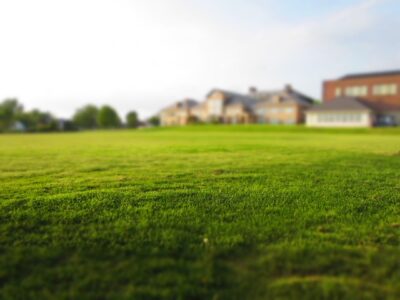The house is where we seek comfort and protection. However, as the world experiences the effects of changing weather patterns, from searing heat waves to intense storms, our homes should be prepared to stand up to these extreme conditions. Weather unpredictability has become the new normal for many. Unexpected rain showers, sudden cold snaps, and even unseasonal storms can catch us off-guard. It’s not simply about needing an extra sweater or umbrella. It’s about ensuring the very structure that shelters us can withstand these changes. A strong house, after all, ensures the safety and well-being of its inhabitants.
Yet, not all homes are built to deal with every kind of weather. That’s why homeowners should look into making certain upgrades. These improvements can significantly improve a house’s resilience against severe weather conditions, ensuring both its longevity and the safety of those living inside. Here are some top upgrades that homeowners might consider to guard their homes against extreme weather events.
Roof Replacement
The roof serves as the primary shield against all forms of weather. Imagine it as a helmet for your home. If it’s damaged, old, or simply not up to par, the rest of your house becomes vulnerable. Rain can seep through, leading to water damage in your ceilings or walls. Heat can penetrate more easily, causing your cooling costs to rise during the summer months. And, in the worst case, a weak roof might even collapse under extreme conditions, risking the safety of everyone inside.
So, what do you do if your roof isn’t in its prime? Consider a replacement. A new roof, especially one chosen with your specific climate and weather challenges in mind, can make a world of difference. For instance, if you live in an area where there’s heavy snowfall, you might choose roofing materials that can bear the weight and have the ability to shed snow easily. In areas prone to wildfires or high winds, metal roofing might be your best bet due to its fire-resistant and durable nature.
But here’s a note of caution: the job of replacing a roof is not something you should take lightly. That’s where professionals come in. In fact, if you’re on a tight schedule or require urgent attention, turning to a Quick Roof Replacement company could be an excellent choice. They specialize in efficient, high-quality work to get your house back in shape in no time.
Impact-Resistant Windows
Remember that time when a stray baseball or stone flung by a mower made you fear for your window’s life? Now, imagine that force amplified multiple times during a storm, with flying debris everywhere. Standard windows might not hold up.
That’s where impact-resistant windows come into the picture. Made with a special kind of laminated glass, these windows can withstand the forces of nature, from high winds to flying debris. When there’s a hurricane or a major storm brewing, having these windows can mean the difference between a safe interior and one littered with shattered glass. Not only do they protect against the weather, but they also offer additional benefits like noise reduction and UV protection.
Reinforced Garage Doors
Many might overlook the garage door when thinking of house protection, but it plays a crucial role. A weak garage door can easily be blown in by strong winds. Moreover, a damaged door becomes an easy entry point for potential burglars.
Choosing a reinforced garage door ensures that your home remains safe not just from extreme weather but also from potential break-ins. Modern designs and materials mean that homeowners don’t have to sacrifice aesthetics for safety. You can have a door that’s both beautiful and resilient. Ensuring that this door is installed correctly is equally crucial, as even the strongest door won’t offer protection if it’s not fitted right.
Foundation Waterproofing
When it rains heavily, where does all that water go? Unfortunately, without proper precautions, a lot of it can end up in our basements or seeping into our homes’ foundations. Water can be a silent destroyer. Over time, it can weaken structures, promote mold growth, and even damage your belongings.
That’s why it’s important to think about waterproofing your foundation. By doing so, you can prevent water from sneaking into places it shouldn’t. Foundation waterproofing comes in different forms. Some folks use sealants to keep water out. These are like protective coats that stop water from passing through. Others might install a sump pump. This device collects water that comes near your home and pushes it away before it can cause any damage. Another option is a French drain, which is a trench filled with gravel or rocks that redirects water away from your home.
Whatever method you choose, the goal is to keep water out. It’s a smart move that can save you a lot of trouble and money in the long run.
Siding Choices
The sides of our houses, often referred to as siding, are like the protective jackets for our homes. Just as you wouldn’t wear a light jacket in freezing temperatures, you wouldn’t want the wrong siding for your home in extreme weather conditions.
Different materials offer different levels of protection. For instance, vinyl siding is popular because it’s affordable and comes in a variety of colors. It’s also durable and can withstand various weather conditions. Another choice is fiber cement. It’s even tougher than vinyl and can handle very high temperatures and strong winds. Brick, on the other hand, is a classic choice that’s been used for ages. It’s sturdy and offers good insulation, making it an ideal option for both hot and cold climates.
Landscaping for Weather Protection
Trees, shrubs, and grass aren’t just for looks. They can also serve as natural protectors for your house. When planted strategically, they can act as windbreakers, reducing the force of strong winds. Deep-rooted plants and trees can also help prevent soil erosion, especially in areas prone to heavy rains.
However, it’s not just about planting any tree or shrub. It’s important to choose plants that are native to your area. These plants are already adapted to the local climate and are more likely to thrive. Thriving plants have stronger roots and can offer better protection against erosion. Plus, native plants often require less water and care, making them both an eco-friendly and low-maintenance choice.
Remember, while trees are beneficial, it’s essential to keep them well-trimmed. It ensures that in case of strong winds, there are no loose branches that might fly off and cause damage.
Conclusion
Protecting our homes from extreme weather is more than just a one-time task. It’s an ongoing effort that requires thought and care. While the steps mentioned might seem like a lot, in the long run, they can save homeowners a great deal of stress, money, and potential heartbreak. It’s always better to be prepared than caught off guard. With these upgrades, your home will not only stand tall against the forces of nature but also offer you and your loved ones a safe and comfortable haven.
Related Post:







